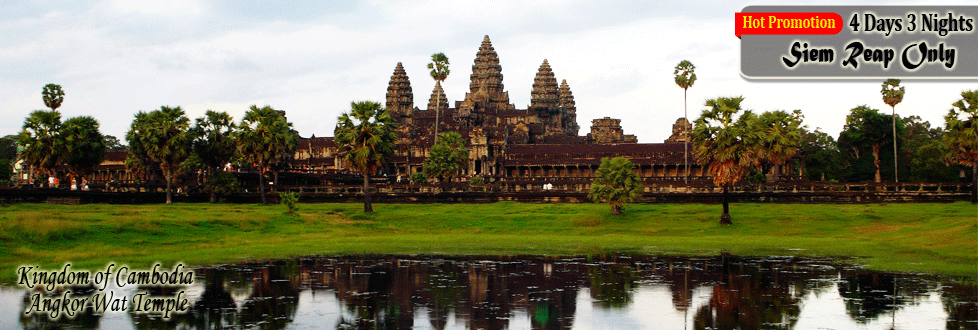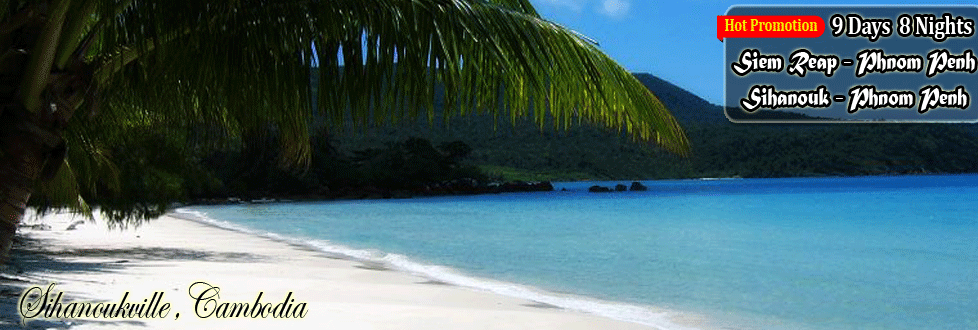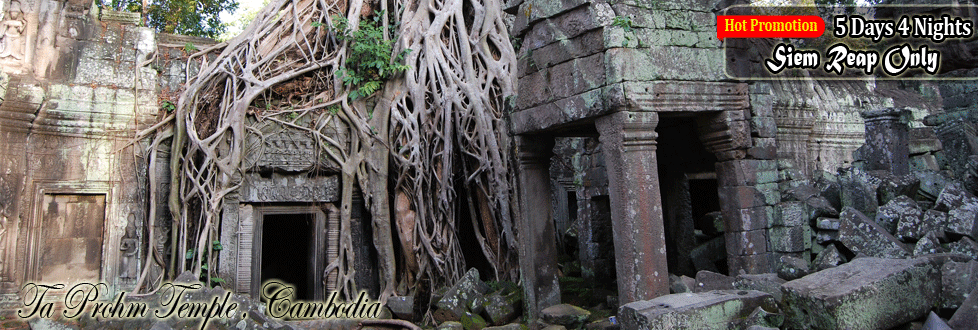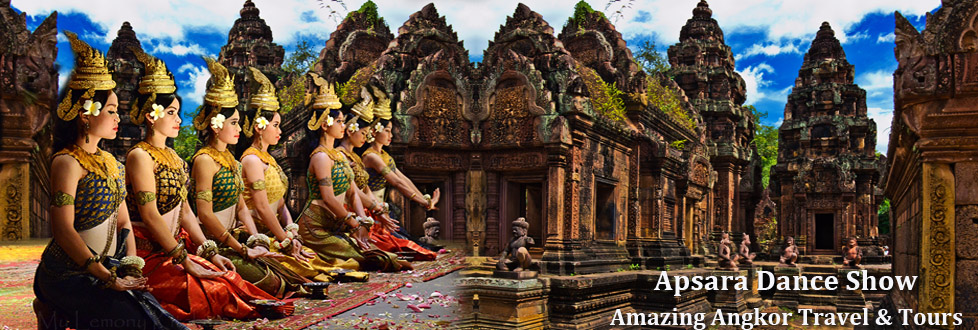EVENTS & FESTIVAL AND HOLIDAY
The Kingdom of Cambodia has a wealth of traditional and cultural festivals dated according to the Cambodian lunar calendar. All of these festivals are influenced by the concepts of Buddhism, Hinduism, and royal cultures. The festivals, which serve as a source of great joy, merriment and Cambodia’s national colors, play a major role in influencing tourists’ opinions, behaviors, and options. Most of these are a time of great rejoicing for the predominantly urban and the rural populace. Nowadays the whole nation unites in understanding its cultural values and traditions. On these pages, are some of the important celebrations organized during the year.
|
January 01
January 07
February 07
March 08
April 13, 14,15
May 01
May 05
May 09
May 13, 14, 15
June 18
Sept 24
Oct 14, 15, 16
October 29
October 31 November 09
Nov 27, 28, 29
December 10
|
- International New Year Day
- Victory Day Over Genocidal
- Meak Bochea Day
- International Women’s Day
- Khmer New Year Day
- International Labor Day
- Visakh Bochea Day|
- Royal Ploughing Day
- Royal Birthday of the King Sihamoni
- Royal Birthday of the King Mother Monineath Sihanouk
- Constitutional and King’s Coronation Day
- Pchum Ben Day
- Royal Coronation of the King
- Royal Birthday of King Father Norodom Sihanouk
- Independence Day
- Water Festival and Moon Festival and Boat Racing
- International Human Rights Day
|
Khmer New Year (Cambodia)
The Khmer New Year, or 'Bon Chol Chhnam Thmei' in the Khmer language, is commonly celebrated on 13th April each year although sometimes the holiday may fall on the 14th April in keeping with the Cambodian lunar calendar. This marks the end of the harvest season when farmers enjoy the fruits of their labor and relax before the start of the rainy season. The New Year holidays last for three days
During this time, people engage in traditional Khmer games; they paly such games as the Bas Angkunh 'seed throwing', Chaol Chhoung 'twisted-scarf throwing', Leak Kanséng 'twisted-scarf hide', tug of war, shuttlecock kicking, etc. Throughout the country, people merrily dance the traditional Khmer forms of the Ran Vong, Ram Kbach, Saravan, and Lam Leav in the open. People in the world always say New Year celebrate their happy festival. They usually schedule and prepare it differently, depend on their belief and tradition. For Cambodian have hold it since past till the present. The reason that cause to finish the old year for the are that: There have been some people believe that there is a story as following one time there were a person "KABEL MORHAPROHM" who asked three questions to "THORM BAL KOMA, the millionaire's on, who had known the three percepts of "TRAI VITH" and ail kinds of the animal's languages. They all had promised to cut the head of the person who failed the exam "THORM BAL" have no way to find the solution, he felled very hopeless, fortunately, there were two eagles which had spoken about these questions to make "THORM BAL" could find the way to settle the problems. The time of gambling arrived "THORM BAL" had spoken that:
1. In the morning, the happiness is on the face that is why all people have to wash their face.
2. In the afternoon, the happiness is on the breath to make the people take water to wash the breath.
3. In the evening, the happiness is on the foot to make the people wash their food in the evening.
The result had broken out "KABEL MORHAPROHM" had to cut his head to give to the oldest had take it go around PRAS SOMERU mountain about 60 minutes after they all bring it to put in the center of KUHA KUNTH MALAY of KAILA mountain. In the end of the year the 7 females angles had changed their turn to take the head and go around the mountain every year till the present. This is the reason to cause "SANG KRAN" or changing the old year into the New Year. Cambodian people are playing the Chaul Choung game in New Year Day Some people have believed that for a period of one year the people always face the problems like diseases or serious obstacles to make them unhappy. When the one of the year they all had celebrated a great festival called "HAPPY NEW YEAR" and the people always prepare them-self, clean the house, and take food to offer the monks. They wear new clothes and play popular games. The festival usually is in 3 days period. The first day is "MOHA SANGKRAN" the second day is "VORNBORTH" and the third day is "THNGAI LIENG SAK". For that time they start to change the old year when the angle comes to get the duties from the former angle were schedule clearly.
WHEN IS THE KHMER NEW YEAR'S DAY CELEBRATED?
Since the period of Norkor Thom, the Khmer people used the Lunar calendar (The revolution of the moon), that why they dated Mekseh (name of the first lunar month, from mid-November to mid-December) as the Khmer New Year's month, and is the first month of the year. And Kadek (name of the last Lunar month) is the second one. After that, they turned to use the Solar calendar (The revolution of the sun) as the most, and they dated the Chetr (5th Lunar month) is the New Year's month, when the sun gets to the Mes Reasey. The Khmer New Year's day is often celebrated on the 13th April (Chetr), but sometime it is celebrated on the 14th April, because of the Solar calendar. The almanac which is base on the Solar calendar is called "Simple arrival or Sangkran Thormada. And the almanac which is based on the Lunar calendar, because the Lunar calendar is relevant to the Buddha's speeches. Buddhist devotees pour water over the statue of a revered Buddhist monk during the New Year Celebrations.
Beside, the Khmer New Year's day that is base on the Lunar calendar isn't regular, because we sometimes celebrate it in the night of the waxing moon (Khneut), or in the night of the waning moon. However, we usually celebrate it around one month.
It means that we don't do it before 4th Keut of Khe Pisak (name of the Solar day) of Khe Chetr and not after 4th Keut of Khe Pisak (name of the 6th Lunar month), so that some of the Khmer people celebrate their New Year's day in Khe Chetr, such as the documents written by Mr. Chio-Takran, Khmer people celebrate this celebration with playing the hand-scarf-throwing game and they gather the statues of Buddha from everywhere to bath. In the other hand, the inscription in stone at Preah Khan is also stated this. Talking about there celebrations in this New Year's Day. The Khmer people celebrate them traditionally as below.
A few days before the Khmer New Year's day, they prepared some food, clean their house, bought some news and so on. When the New Year's Day comes, they prepare something such as 5 candles, 5 incenses, a pair of 5 Baysey, a pair of Baysey Baklam, a pair of Slathor (a ceremonial ornament made with a banana tree trunk bake), a tray of cigarettes, some flowers and some fruits to sacrifice to the new heaven. When every is ready, they sit together near that place and light the candles to pray for happiness from the new heaven and start to pray before breaking each other. On the other hand, we have different celebrations during these 3 days of New Year's Day. On the first day, they take some food to offer the monks at the monastery in the evening, they gather the sand to build up a sandal mountain around the pagoda or around the bany tree in the early evening, and they some drink to the monks and invite them to bany. On the second day, children give some new clothes and money to their parents and grandparents. They also give some gift to their maids and poor people. In the evening, they go to build up the sandal mountain and start to bany that they consider it a Cholamony Chedey and ask the monks to bony and offer them the food to dedicate this sin to the spirit of the ancestor. In the morning of the third day, they also invite the monks to bany for the sandal mountain. And in the evening, they bath the monks and statue of Buddha. During this third day, the people also play some traditional games such as the hand-scarf-throwing game, they kick the nuts game, the tug of war game, trot dancing (Battambang, Siem Reap). They also dance some traditional dancing such as Rorm Vong, Rorm Khbach…. etc.
Royal Ploughing Ceremony
The Royal Ploughing Ceremony, or 'Bon Chroat Preah Nongkoal' in the Khmer language, is solemnly celebrated at the beginning of the sowing and planting season. Every year in May, this cultural ceremony takes place at the park in front of the National Museum (next to the Royal Palace). Cambodia has deep connection with earth and farming. There is a deep astrological belief that royal oxen known in Khmer as Usapheak Reach, have an instrumental role in determining the fate of the agricultural harvest each year. Traditionally, the King Meak, representing the king of Cambodia, ploughs the field whilst the Queen, the Preah Mehuo, sows seeds from behind. The field is ceremoniously ploughed three times around. The royal servants then drive the royal oxen to seven golden trays containing rice, corn, sesame seeds, beans, grass, water, and wine to feed. The royal soothsayers interpret what the oxen have eaten and predict a series of events including epidemics, floods, good harvests, and excessive rainfall. At this festival, both men and women wear brightly colored Khmer traditional costume.
Pchum Ben Day or All Soul Day
Running for 15 days, usually from the end of September into October, this festival is dedicated to blessing the spirits of the dead and is one of the most culturally significant in Cambodia. The exact date defers year to year as determined by the lunar calendar. Each household visits their temple of choice and offers food to the monks. Offering of food is a meritorious act and is one of the oldest and most common rituals of Buddhism. During the Pchum Ben festival, people bring food to the temple for the monks and to feed hungry ghosts who could be their late ancestors, relatives or friends. Pagodas are usually crowded with people taking their turn to make offerings and to beg the monks to pray for their late ancestors and loved ones. Many remain behind at the temple to listen to Buddhist sermons.
Footnote:-
"Hungry ghost" is one of the six modes of existence in the ‘Wheel of Life’. Hungry ghosts or ‘Preta’ which means ‘departed ones’ in Sanskrit, are pitiable creatures with huge, empty stomachs and pinhole mouths; their necks are so thin they cannot swallow, so they remain hungry. It is believed that beings are reborn as hungry ghosts because of their greed, envy and jealousy.
Cambodians leave food offerings on altars and around temple grounds for hungry ghosts. Pchum Ben is a festival that features food and entertainment for such hungry ghosts.
Water Festival
The Water Festival, a spectacle to behold, is probably the most exorbitant festival held each year in November. It is usually celebrated for three days, i.e. the 14th and 15th of the waxing moon and the 1st of the waning moon of the month of Kadek. The 15th of the waxing moon is the last full moon day. The festival ushers in the fishing season, marks a change in the flow of the Tonlé Sap and the ebbing-water season, and is seen as thanksgiving to the Mekong River for providing the country with fertile land and abundant fish. At the height of the rainy season, the water of the Mékong River forces the Tonlé Sap to reverse its current and to flow up to the Tonlé Sap Lake. As the water of the Mékong River begins to subside, the swollen Tonlé Sap Lake flows back to the Mékong River through the Tonlé Sap and empties into the sea, which leaves behind vast quantities of fish. This, indeed, is a remarkable phenomenon of the Tonlé Sap.
Public Holidays
The Kingdom of Cambodia has a great wealth of traditional and cultural festivals dated according to the Cambodian lunar calendar. All of these festivals are influenced by the concepts of Buddhism, Hinduism, and royal cultures. Most of these are great rejoicings of the urban and rural populace, held annually as follows.
International New Year’s Day
On the eve of the International New Year’s Day, the Ministry of Tourism will host the Countdown Day in front of the NagaWorld Hotel in Phnom Penh. This festival will be attended by officials from all public and private sectors to celebrate the International New Year’s Day.
Tuesday, January 01, 2013
Victory Day over the Genocidal Regime
The Victory Day commemorates the end of the Pol Pot Genocidal Regime. This important ceremony is marked by a military parade, carnival floats, and national achievements. All over the city, flags and bunting as a sign of national pride adorn the front of shops and houses in all the main thoroughfares.
Monday, January 07, 2013
Meak Bochea Day, or “Buddha’s Preachment Commemoration Ceremony” The Meak Bochea Day is held during the full moon of the month of Meak in commemoration of the spontaneous gathering of the monks to listen to the Buddha’s preaching.
Monday, February 25, 2013
International Women’s Day
International Women’s Day is a global day celebrating the economic, political and social achievements of women and marking respect, appreciation and love towards women.
Friday, March 08, 2013
Cambodian New Year’s Day
The Khmer New Year Day, called “Bon Chol Chhnam Thmei Khmer” in the Khmer language, is celebrated on 13 April in keeping with the Cambodian lunar calendar. The New Year holidays last for three days. This festival marks the end of the harvest season when Cambodian farmers enjoy the fruits of their labor and relax before the start of the rainy season.
Sunday, April 14, 2013
Monday, April 15, 2013
Tuesday, April 16, 2013
International Labor Day
International Labor Day is an annual holiday to celebrate the economic and social achievements of workers. Labor Day has its origins in the labor union movement, specifically the eight-hour day movement, which advocated eight hours for work, eight hours for recreation, and eight hours for rest.
Wednesday, May 01, 2013
Royal Birthday of His Majesty Preah Bat Samdech Preah Baromneath Norodom Sihamoni, the King of the Kingdom of Cambodia. This celebration is triumphantly held inside the Royal Palace and fireworks are prominently displayed on Tonlé Sap from 13-15 May to revere King Norodom Sihamoni, the son of His Majesty Preah Bat Samdech Preah Norodom Sihanouk, Preahmahaviraksat. He was born on 14 May 1953 in Phnom Penh Capital.
Monday, May 13, 2013
Tuesday, May 14, 2013
Wednesday, May 15, 2013
Visakh Bochea Day, or “Buddha’s Birth Commemoration Ceremony”
The Visakh Bochea Day, called “Bon Visakh Bochea” in the Khmer language, commemorates the anniversary of the birth and illumination of the Buddha.
Friday, May 24, 2013
Royal Plowing Ceremony
The Royal Plowing Ceremony, called “Bon Chroat Preah Nongkoal” in the Khmer language, is solemnly celebrated at the beginning of the sowing and planting season. Every year, in May, this cultural ceremony takes place at Meru Field in front of the National Museum (next to the Royal Palace).
Tuesday, May 28, 2013
International Children’s Day and Cambodian Children’s Day
The International Children’s Day marks children’s liberation from the brutal suppression and threats of violence of fascists.
Saturday, June 01, 2013
Royal Birthday of Samdech Preah Maha Ksatrei Norodom Monineath Sihanouk, Cambodian Queen-Mother with Freedom, Dignity and Happiness
Tuesday, June 18, 2013
Constitution Day
The Constitution Day marks the proclamation of the constitution of the Kingdom of Cambodia issued on 24 September 1993.
Tuesday, September 24, 2013
Phchum Ben Day, or “Spirit Commemoration Ceremony”
On 4 October, the Spirit Commemoration Ceremony, called “Bon Phchum Ben” in the Khmer language, is one of the most significant cultural and religious events of the year jointly celebrated for the spirits of the dead including ancestors and relatives.
Thursday, October 03, 2013
Friday, October 04, 2013
Saturday, October 05, 2013
Commemoration Day to the Royal Soul of His Majesty Preah Bat Samdech Preah Norodom Sihanouk, Preahmahaviraksat, King-Father of the Cambodian National Independence, Territorial Integrity and Unity. This celebration is triumphantly held inside the Royal Palace and at royal governmental institutions on 15 October every year to revere His Majesty King-Father Norodom Sihanouk, or His Majesty Preah Barom Ratanakaodh as his posthumous name, a former influential king of Cambodia. He was born in Phnom Penh Capital, Cambodia, on 31 October 1922, and he died in Beijing Capital, the People’s Republic of China, on 15 October 2012.
Tuesday, October 15, 2013
Paris Peace Accord Day
The Paris Peace Accord Day marks the agreements on a comprehensive political settlement of the Cambodia conflict signed by Cambodia in Paris, France on 23 October 1991.
Wednesday, October 23, 2013
Royal Coronation of His Majesty Preah Bat Samdech Preah Baromneath Norodom Sihamoni,the King of the Kingdom of Cambodia
Tuesday, October 29, 2013
Independence Day
The National Independence Day takes place at the site of the Independence Monument at the junction of Preah Norodom Blvd. and Preah Sihanouk Blvd. to commemorate independence Cambodia gained from France on 9 November 1953. This important ceremony is marked by a military parade, carnival floats, and national achievements. All over the city, flags and bunting as a sign of national pride adorn the front of shops and houses in all the main thoroughfares
Saturday, November 09, 2013
Regatta, Procession of Illuminated Floats, Salutation to the Moon, and Offering of Bananas and Ambok
The festivities are held in front of the Royal Palace, marking a change in the flow of Tonlé Sap, the fishing and ebbing-water season, and thanksgiving to the Mekong River for providing the country with fertile land and abundant fish. Moreover, the boat racing marks the strength of the powerful Khmer marine forces in the ancient Khmer Empire. Provincial residents always save up to visit the capital to join in the festivities.
Saturday, November 16, 2013
Sunday, November 17, 2013
Monday, November 18, 2013
International Human Rights’ Day
The International Human Rights’ Day marks the universal declaration of human rights adopted by the United Nations on 10 December 1948 in Paris, France.
Tuesday, December 10, 2013




.jpg)
.jpg)
.jpg)

.jpg)
.jpg)
.jpg)

.gif)

 Cambodia Visa & Passport
Cambodia Visa & Passport 


.png)
